Rewilding Europe completed its first ever translocation of water buffalo last week, with a herd of seven animals successfully released on Ermakov Island in the Ukrainian part of the Danube Delta. The hefty herbivores will create and maintain a mosaic landscape on the island – thereby supporting the area’s dynamic, wild nature – as well as driving development of local nature-based tourism.
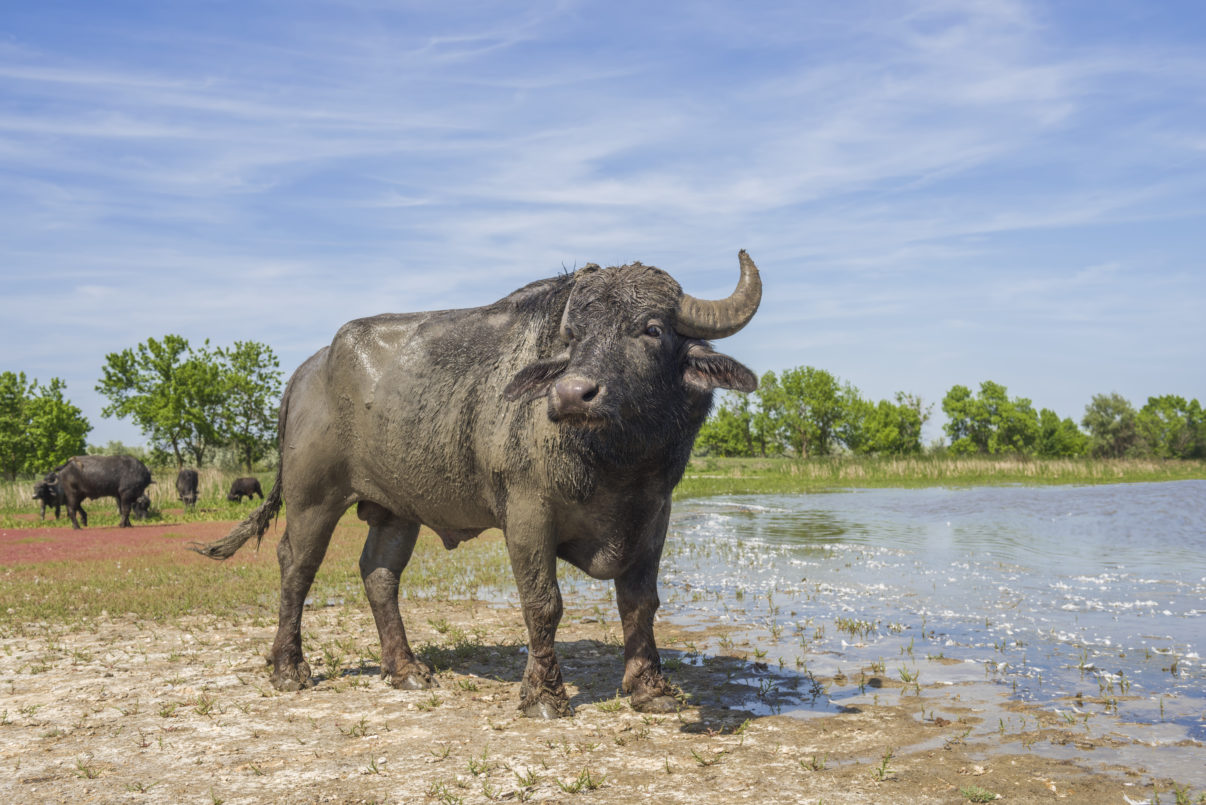
Unique impact
Rewilding Europe and Rewilding Ukraine are delighted to announce that a mixed herd of seven water buffalo (five males, two females – one pregnant) has been successfully released onto Ermakov Island in the Ukrainian part of the Danube Delta rewilding area. As the animals roam freely across the 3500-hectare island, their natural grazing will help to create a dynamic landscape, thereby benefitting an array of wildlife species, such as birds, amphibians, insects and fish.
Water buffaloes are well suited to the environment in the Danube Delta, with other recently reintroduced animals thriving here. They adapt better to wet conditions and poor quality vegetation than cattle, with their delta diet including young reeds.
“These animals are one of nature’s great engineers,” explains Rewilding Ukraine team leader Mykhailo Nesterenko. “As large bovines they open up the scrub and reedbeds, creating pools and puddles which are home to many insects, amphibians and fish.”
“Buffaloes are also unrivalled seed distributors,” continues Nesterenko. “Studies have shown they may carry seeds of more than 200 plant species in fur and in their digestive system. We expect these magnificent animals to create habitats in the Danube Delta which no other living creature could.”
Tourism destination
In addition to regulating vegetation and landscapes, Ermakov Island’s buffaloes will draw growing numbers of tourists. In partnership with local authorities such as the Danube Delta Biosphere Reserve, the World Wide Fund for Nature (WWF) reflooded the island about 10 years ago by opening up some of the surrounding dykes, and, it has already become one of the richest areas in the Danube Biosphere Reserve in terms of its wild nature.
This year Rewilding Ukraine will start to help the surrounding communities with tourism infrastructure development and marketing, with the goal of making Ermakov an attractive and well-known nature-based tourism destination.

Healthy herd
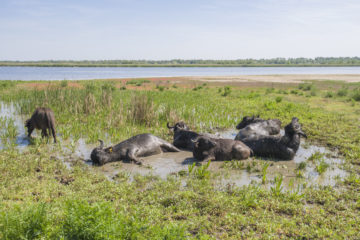
The buffalo herd was transported to Ermakov Island by barge. They had previously been kept on a small farm near the village of Vilkovo, after travelling around 1000 kilometres by road – a day’s journey – from the Tisza Basin region in Ukrainian Transcarpathia. Here they had been carefully collected and cared for by German ecologist Michael Jacobi.
All the buffalo were pronounced fit and healthy upon arrival at their final destination. “The animals travelled well, although they didn’t like the hot weather or the barge trip,” says Oleg Dyakov, a rewilding officer attached to the Rewilding Ukraine team. “After landing they immediately headed to the nearest pool to cool off. Buffaloes are very intelligent and social animals and they seemed to relish bathing in their new home.”
Restoring wetlands and steppes
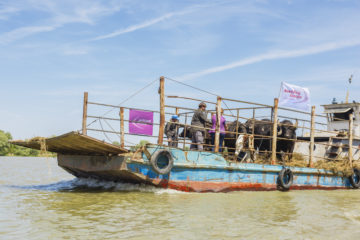
This is the first time that Rewilding Europe has overseen a translocation of water buffalo. The animals were brought to the Danube region by Rewilding Europe’s partner organisation Rewilding Ukraine, under the framework of the project “Restoring wetlands and steppes of the Danube Delta”.
Funded by a 2.1 million euro grant from the Endangered Landscapes Programme, this is the delta’s largest transboundary restoration project to date. It involves the recovery of natural landscapes, their ecological processes (such as flooding and natural grazing) and associated flora and fauna across at least 40,000 hectares (400 square kilometres) of the Danube Delta Biosphere Reserve in Romania, Moldova and Ukraine.
Boosting natural grazing
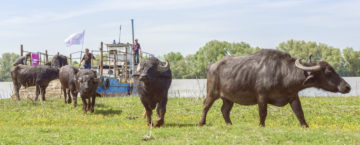
In the coming weeks natural grazing on Ermakov will be given a further boost with the arrival of another 10 water buffaloes (from the same farm in Transcarpathia), and a shipment of 15 wild Konik horses. The horses were shipped from Latvia in March, and are currently under quarantine in Orlovka, an area just opposite Ermakov across the Danube river. Interacting with natural flooding and other natural processes, these completely free-living large herbivore herds will greatly diversify the dynamics and habitats on the island.
Positive impact of water buffalo
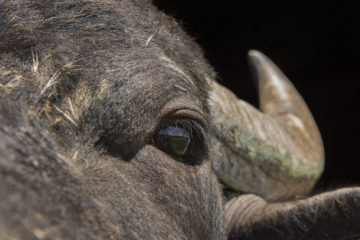
Water buffalo have the same positive effect on flora and fauna diversity that other grazers have. By feeding, trampling and wallowing, they create a more diverse landscape by preventing any single plant species from becoming over-dominant. Their organic waste also provides habitat and food for many insects, while the small pools of water they create are important for amphibians such as red-bellied toads and tree frogs.
Europe was once home to an indigenous species of water buffalo (Bubalus murrensis), which became extinct during the Pleistocene period. All water buffalo now living in Europe are related to the Asiatic water buffalo (Bubalus arnee), which was probably introduced into Europe from India or another Asiatic country. Before their relatively recent reintroduction into the Danube Delta, such buffalo were present in the region until around 100 years ago.
Want to know more?
- Read more about Rewilding Europe’s involvement with natural grazing
- Read more about Rewilding Europe’s efforts in the Danube Delta
- Visit the Rewilding Ukraine Facebook page
- Visit the Rewilding Danube Delta Facebook page
